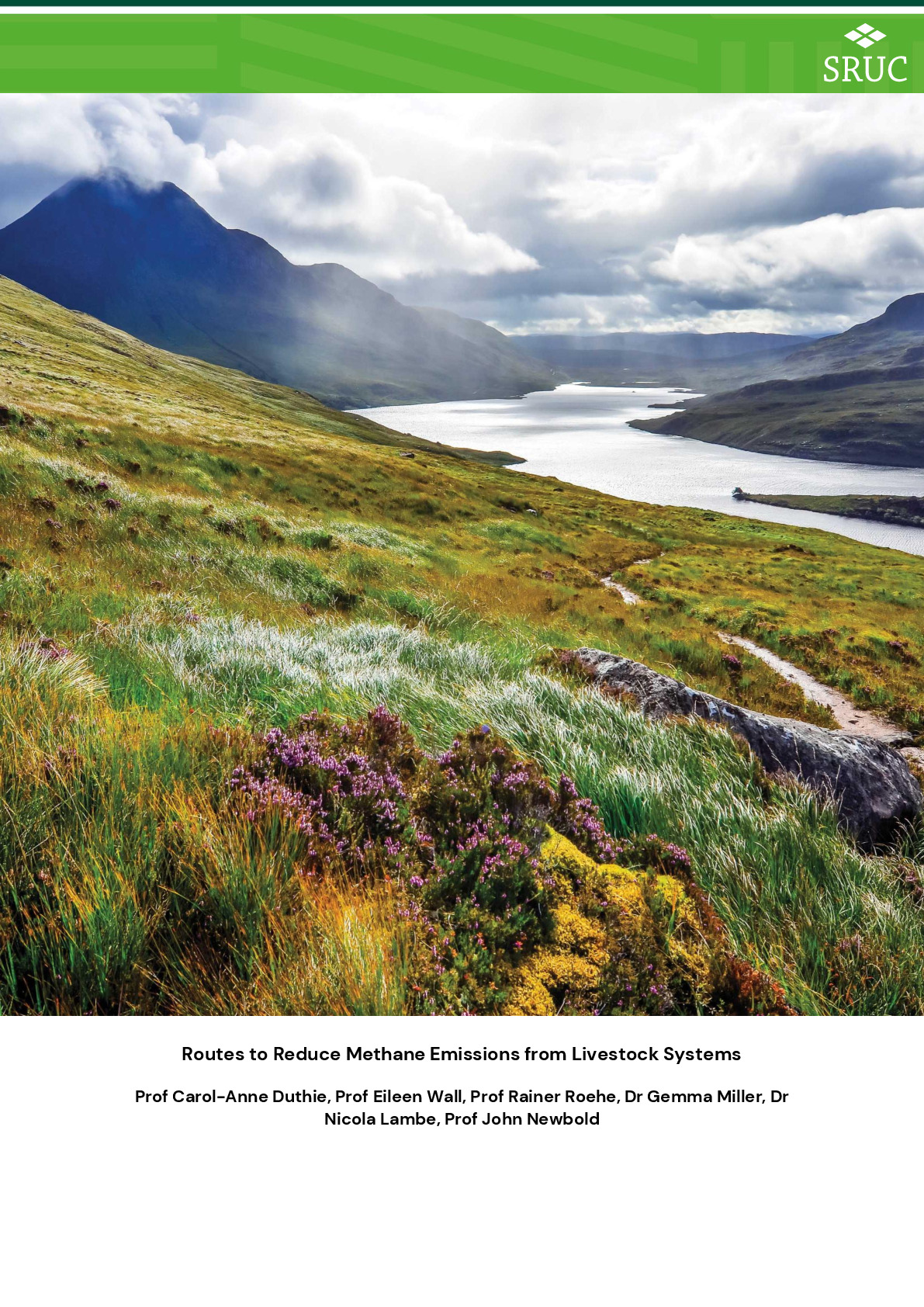Description
Methane is the prominent GHG from agriculture, accounting for 59% of agricultural emissions. Enteric methane, produced by ruminants as they digest feed, is the major source of these emissions. There are several options to reduce enteric methane emissions, some of which could deliver reductions in the short to medium term (e.g. dietary), and some of which are considered longer-term strategies (e.g., breeding). This report identifies the options for reducing methane emissions from beef, sheep, and dairy livestock sectors and provides clarity on current readiness levels and the potential of each technology to reduce methane emissions, alongside costs and co-benefits.
Authors: Prof Carol-Anne Duthie, Prof Eileen Wall, Prof Rainer Roehe, Dr Gemma Miller, Dr Nicola Lambe, Prof John Newbold.
